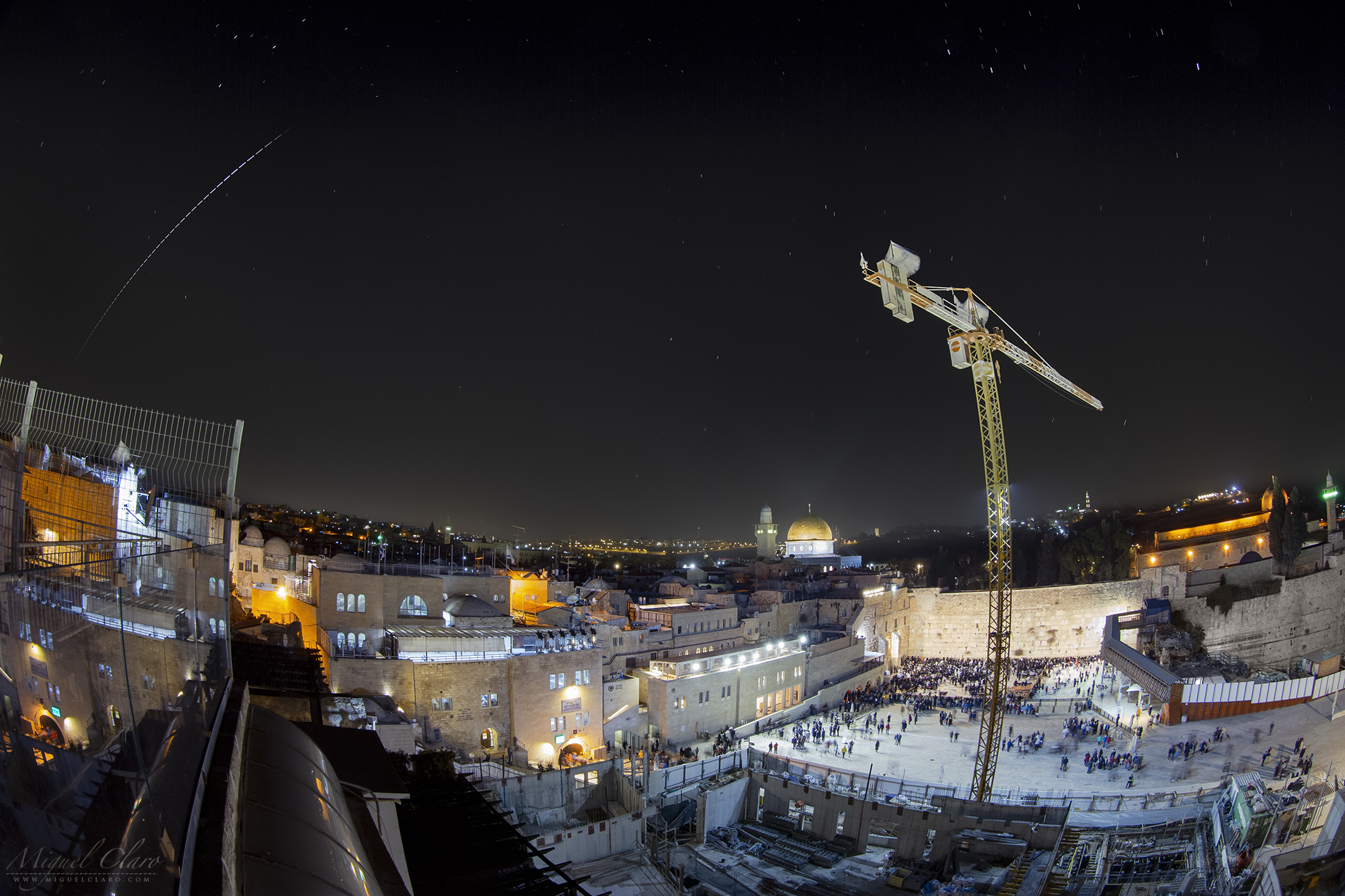International Space Station Streaks Across Jerusalem's Night Sky (Photo)

Miguel Claro is a professional photographer, author and science communicator based in Lisbon, Portugal, who creates spectacular images of the night sky. As a European Southern Observatory Photo Ambassador, a member of The World At Night and the official astrophotographer of the Dark Sky Alqueva Reserve, he specializes in astronomical "skyscapes" that connect Earth and the night sky. Join him here as he takes us through his photograph "A Sky Without Religious Boundaries Shows the ISS Above the Historic Old City of Jerusalem."
The image shows the path of the International Space Station (ISS) crossing a sky free of any religious, cultural or ethnic boundaries above the beautiful and historic city of Jerusalem.
As one of the oldest cities in the world, Jerusalem was added to the UNESCO World Heritage List in 1981. Jerusalem is considered holy by the major Abrahamic religions (Judaism, Christianity and Islam) and is also the place where several important events in the life of Jesus took place. Divided into four quarters — The Jewish Quarter, The Armenian Quarter, The Christian Quarter and The Muslim Quarter — the city has been destroyed, captured and attacked several times over the course of its existence.
Related: How to Spot the International Space Station
In the image, the crane in the foreground may serve as a reminder of our capacity as humans to recover or build major structures, especially when teamwork between different countries can be achieved in the name of science, progress and peace. An example of this is the most complex and advanced machine ever built, which is now orbiting planet Earth: the International Space Station, featured in the upper-left corner of the image, between the trails of the constellations of Cassiopeia and Ursa Major.
On the ground, the right side of the image shows the only part of Jerusalem that survived all attacks throughout history and that remains partially intact today: the Western Wall.
To create this image, I captured a sequence of 52 single shots with a Canon 6D digital camera and a 14-millimeter lens, with the aperture set to f/8, ISO set to 500 and an exposure time of 2 seconds. The ISS trail appears as a dashed line because the images were shot with the camera set to "sequence mode," which allowed me to combine multiple exposures rather than capturing a single long exposure.
Get the Space.com Newsletter
Breaking space news, the latest updates on rocket launches, skywatching events and more!
Editor's note: If you have an amazing night sky photo you'd like to share with us and our news partners for a possible story or image gallery, please contact managing editor Tariq Malik at spacephotos@space.com.
- Hoax in the Holy Land: Jerusalem UFO a Proven Fake
- Space Station Flies Over Roman Ruins in Stunning Skywatcher Photo
- Photographer Sees International Space Station Cross the Sun Amid Solar Prominence
To have a print of Claro's amazing astrophotography, visit his Fine Art Print store at www.miguelclaro.com/prints. Follow us on Twitter @Spacedotcom and on Facebook.
Join our Space Forums to keep talking space on the latest missions, night sky and more! And if you have a news tip, correction or comment, let us know at: community@space.com.









